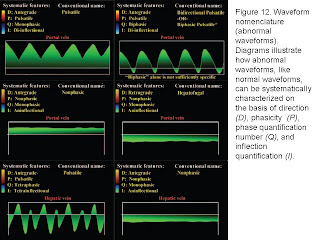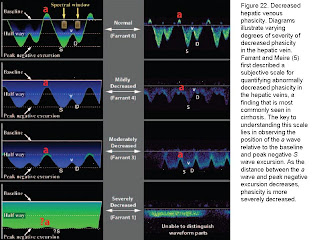Doppler ultrasonography (US) is usually the first-line modality for evaluating flow in native liver vessels and transjugular intrahepatic portosystemic shunts (TIPS). Waveforms, which represent flow in each of the major vessels and in TIPS, have been well described. The appearance of these waveforms should be recognized, and the mechanisms behind their generation should be understood by those interpreting these examinations. Understanding how waveforms are formed—that is, their mechanisms for generation—is predicated on knowing basic vascular Doppler concepts and established nomenclature. This article is a review of these basic concepts and nomenclature as applied to the interpretation of liver Doppler US waveforms.
©RSNA, 2011 • radiographics.rsna.org
LEARNING OBJECTIVES FOR TEST
After reading this article and taking the test, the reader will be able to:
■■Discuss the basic concepts and terminology for vascular Doppler US.
■■Recognize the characteristic appearances of normal and abnormal liver Doppler waveforms.
■■Describe the US manifestations of both normally functioning and malfunctioning TIPS.
Abbreviations: CHF = congestive heart failure, IVC = inferior vena cava, PI = pulsatility index, RI = resistive index, TIPS = transjugular intrahepatic portosystemic shunt
RadioGraphics 2011; 31:161–188























































